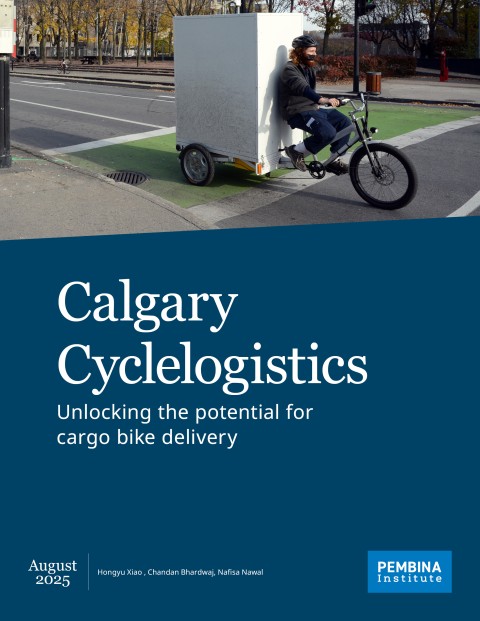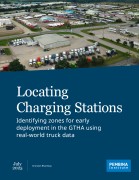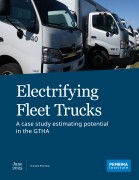As e-commerce continues to grow, urban delivery vehicles are increasingly common in Calgary’s neighbourhoods and city centres. Between 2019 and 2025, online sales surged and remain well above pre-pandemic levels, indicating a lasting shift in consumer behavior.
This growing demand, combined with ongoing urbanization, is expected to increase delivery vehicles on city streets — contributing to poor air quality, traffic congestion, noise and road safety concerns, and higher emissions.
Despite these challenges, goods movement is essential to the economy. To illustrate, in 2024, Alberta’s transportation and warehousing sectors employed approximately 144,400 people and contributed nearly 6% to the Calgary region’s GDP — or $6.67 billion — in 2023. More than 120,000 truck trips occur daily in Calgary, and truck traffic increased by over 55% between 1996 and 2021.
Exploring sustainable delivery: Cyclelogistics
Cities are increasingly looking to sustainable delivery methods. One emerging solution is cyclelogistics — using bicycles, tricycles and multi-wheeled cycles to transport goods. By shifting even a small portion of deliveries from trucks to bikes, cities can reduce the distance travelled by trucks and vans, along with associated emissions, congestion and other urban freight impacts. Cargo e-bikes also offer operational advantages, including flexible parking and the ability to bypass traffic.
Currently, cargo e-bike delivery is not widely adopted in Calgary. Realizing its potential requires supportive policies, infrastructure and business models.
Calgary context and research
To explore how cyclelogistics could work in Calgary, we conducted both a qualitative and quantitative analysis of the delivery landscape in Calgary and the potential for cargo e-bike delivery. This included interviews with key stakeholders in the logistics space.
Key findings from stakeholder interviews:
- Financial barriers emerged as a significant concern.
- Stakeholders identified infrastructure as a key determining factor for cargo e-bike adoption.
- Most stakeholders interviewed were open to exploring the use of cargo e-bikes in their operations. However, they had limited awareness of their potential use and felt uncertainty about how to integrate them into business operations.
- Stakeholders frequently cited Calgary’s geography and climate as barriers to cargo e-bike adoption.
Using these insights, we developed a market assessment tool to estimate the potential for cargo e-bike deliveries in Calgary. Our analysis suggests that between 1% and 4% of motorized urban freight trips could be shifted to cargo bikes. Replacing just 1−4% of freight traffic with cargo bikes could reduce between 0.15 and 0.62 million tonnes of carbon dioxide equivalent per year.
Recommendations for Calgary
To support the growth of cyclelogistics, we recommend that the City:
- support business development of cyclelogistics hubs
- expand cycle infrastructure and reevaluate design guidelines
- create a cargo e-bike sharing program for business improvement areas
- start a cargo e-bike pilot program
- facilitate cyclelogistics awareness and knowledge-building campaigns
- amend bylaws and regulations to facilitate cargo e-bike operations
Explore the full report for more details and insights on how Calgary can unlock the power of cargo e-bike deliveries to transform urban goods movement.







